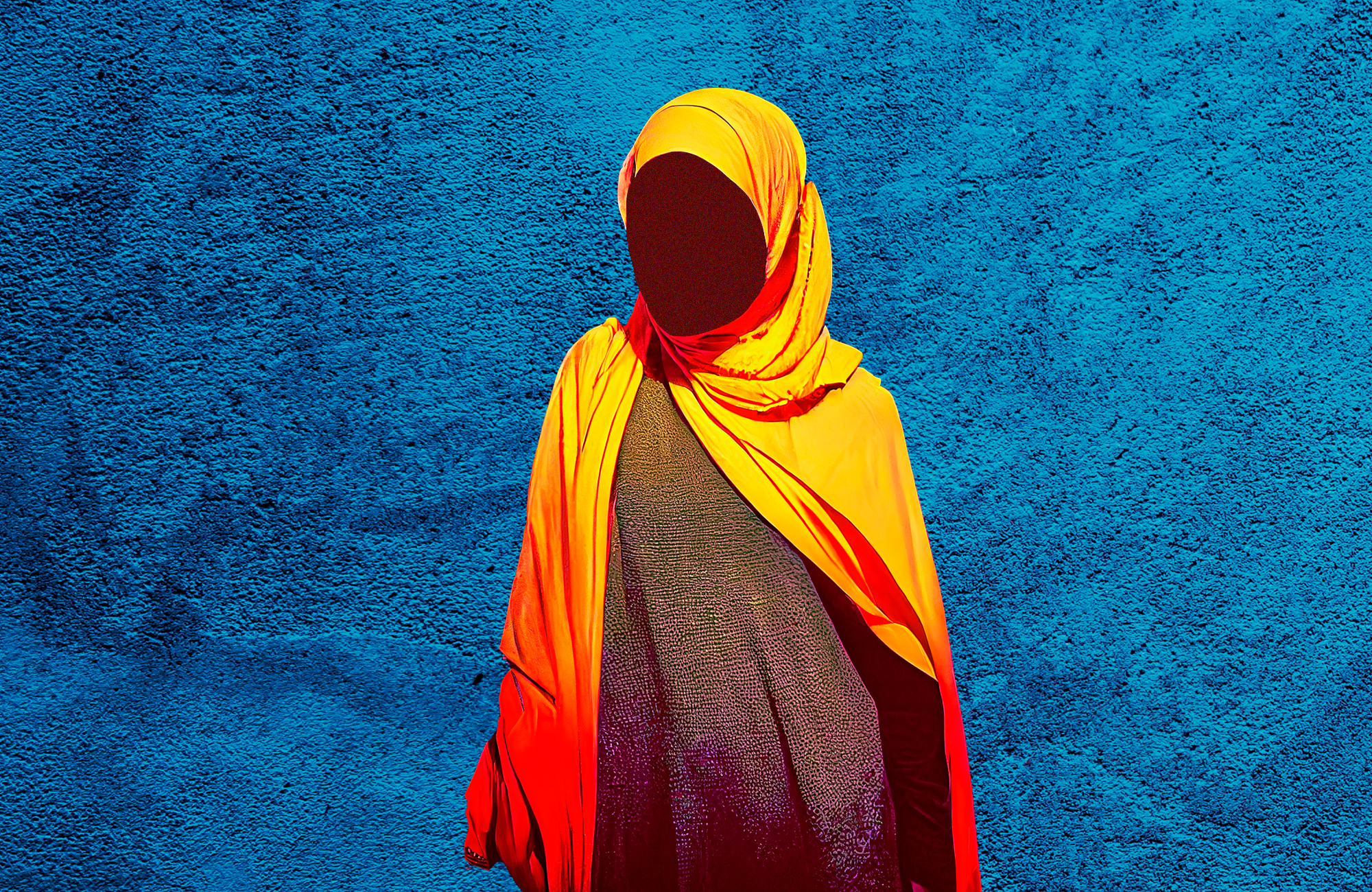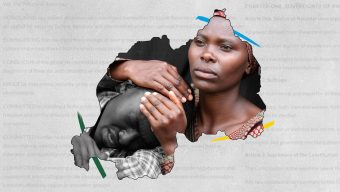The traditional definition of patriarchy is a system of society or government in which men hold the power (thanks to it being passed down along the male line) and women are largely excluded from it. The word is a noun. However, if we think of patriarchy as a verb, we can move our focus from the abstract theory to the agents and institutions that actually do the “patriarching.” In other words, can a religion patriarch? No. But the clergy can – in any faith based on reading any religious scripture. The state does not patriarch per se, but the politicians who constitute the state often do, particularly on issues such as abortion. Educators, reporters, celebrities, and family members can all patriarch at the societal-cultural level while executives, managers, and advertisers can at the economic level.
It is important to keep this active verb in mind when considering the events in Iran that began when the morality police arrested Mahsa Amini for improperly wearing her religious head covering (or as a Kurdish journalist told Roya Hakakian, the bottom button of Amini’s dress had come undone.) Ultimately, forced veiling and dress code in Iran is a securitization of gender in which women’s clothing is embedded and implicated in how the Islamic Republic defines regime security. The hijab is not enforced for religion but for the profane rationale of projecting a manifestation of the state’s power into (and onto) society. Thus, it is necessary to disaggregate religious from state patriarchy in the case of the Islamic Republic.
From Veiling to Unveiling
Conceptually, the Islamic Republic’s current forced veiling law is linked to the unveiling that occurred in the Turkish Republic when the secular state was formed from the collapsed Ottoman Empire after World War I. Not only did Mustafa Kemal Ataturk, Turkey’s secular founder, remove the mandatory veil but also women were granted the vote in 1934 (11 eleven years before France.) The state passed legislation against women wearing the hijab in government buildings, and universities, and at state functions and events.
The unveiled women of Turkey became a living embodiment of government policies, of Westernization and modernization. And although one might appreciate this legislation (and the expression of it), it still serves a purpose that is similar to the Islamic Republic’s current forced veiling law in that it demonstrated how the state regulated clothing simply because it could. By dictating something as personal as clothing, the government showed its ability to shape its citizens. The practice ultimately constitutes a “state feminism” or “state patriarchy.” (And this, in part, has sprung a separate set of complications that the EU is currently tackling in regards to female attire and religion.)
The ability of a state to dictate how a woman appears in public is all about communicating to the citizens the strength of the regime.
Yet, the policies of secular Turkey could only do so much to transform religious, socio-cultural, or economic patriarchy, particularly in the rural areas. What Turkey ended up with was a public edict defined by the state that could not necessarily reach into the home and replace the private patriarchy of the husband/father-dominated family.
In 1936, after a visit to Turkey, Iran’s leader Shah Reza Pahlavi mandated unveiling in an effort to ‘civilize’ Iranians. The police had instructions to actually pull veils off women and, as a result some stayed home to avoid this. Soon enough the mandate failed and was lifted in 1941 due to resistance from the clerical establishment, as well as women who wore the hijab in defiance of the state. The failure to enforce unveiling pointed to the state’s weakness and, by the 1970s, the veil came to symbolize an anti-Western stance and a challenge to Mohammad Reza Pahlavi, Shah Reza’s son, who had continued the modernization process (and also lifted the ban on veiling) and became the last Shah of Iran when he was overthrown in 1979. The Islamic Republic that emerged after Mohammad Reza made veiling mandatory in 1981 and Iran’s habit of deciding what women wear continued.
As Mimi Thi Nguyen of the University of Illinois notes, “forced unveiling and forced veiling are not dissimilar disciplinary practices that regulate the feminine body as a civic body subjected to the order of the visible.” Minoo Moallem, in her book Between Warrior Brother and Veiled Sister: Islamic Fundamentalism and the Politics of Patriarchy in Iran, writes of her grandmother’s experience with unveiling and her own later experience of veiling during the Islamic Republic: “My grandmother’s body – like my own later – was marked by corporeal inscriptions of citizenship. Both of us shared an incorporated traumatic memory of citizenship in the modern nation-state. She was forced to unveil; I was forced to veil.”
What Moallem writes of Iran holds true for Turkey and also (albeit on the other spectrum) Saudi Arabia and even the extreme cases of the Taliban and Islamic State: “Both forced veiling and forced unveiling operated as disciplinary state edicts – often enacted violently on female bodies by male soldiers or police – at discrete political times to instrumentally shape a feminine civic body.”
The ability of a state to dictate how a woman appears in public is all about communicating to the citizens the strength of the regime. While the veil or the hijab seems like a religious matter in Iran, it is also about secular politics and women serve as the billboard of the state’s power. The act of showing a bit of hair or makeup – known as bad hijabi – emerged as an expression of women’s agency and resistance.
The Securitization of Gender
Bad hijabi (improper veiling) is defined as “uncovered head, showing make-up, uncovered arms and legs, thin and see-through clothes, tight clothes such as trousers without an overall over them, clothes bearing foreign words, signs or pictures, nail varnish, brightly colored clothing and improper modes of body movement or talking.” The infraction is often punished by revolutionary militias, known as the Guidance Patrols and referred to as the “morality police,” who are the coercive arm of the state that enforces proper dress code. Iran’s current supreme leader, Ayatollah Khamenei stressed the danger of bad hijabi in a speech in 2005:
More than Iran’s enemies need artillery, guns and so forth, they need to spread their anti-culture that leads to moral corruption. Instead of bombs, they now send miniskirts and short manteaus. If they arouse sexual desires in any given country, if they spread unrestrained mixing of men and women, and if they lead youth to behavior to which they are naturally inclined by instincts, there will no longer be any need for artillery and guns against that nation.
The speech demonstrates the securitization of gender by the highest executive power in the Islamic Republic. The same person who dictates the fate of Iran’s nuclear energy program and other national security issues determines what women are and are not allowed to wear.
Ole Wæver of the Copenhagen School of security studies argues that security is a speech act: an issue becomes a threat whenever an actor declares it to be a matter of national security. According to Adam Hoffman of Tel Aviv University, “security issues do not simply exist as natural facts but are defined and articulated as such by political actors.” By labeling something as “security,” the issue is dramatized as a supreme priority and justifies the use of extraordinary measures outside the scope of normal politics. Most recently, around the world, the coronavirus was securitized. In Iran, a woman’s dress is a matter of national security. The mini-skirt is conflated with a bomb, the unrestrained mixing of genders with artillery and guns. By this point, the hijab is no longer an issue of faith or spirituality but an issue of secular, profane power.
Decoupling Religious from State Patriarchy
Nader Hashemi, in his article “The ‘Talibanization’ of Iran Has Sparked a Revolutionary Feminist Backlash,” cites Abdolhadi Marashi, a cleric in Mashhad (a holy city analogous to Vatican City for Catholics) who resigned from his provincial post in the wake of Mahsa’s death. In his resignation letter, Marashi wrote that “our understanding of what is right and what is wrong under Islam has been limited only to the hijab.” Instead of fixating on the enforcement of the hijab law, Marashi chose to stress key issues like “government corruption, social justice, economic security, class disparity, drug addiction, national poverty, [and] freedom of expression.”
When a cleric working for the state, Marashi was an example of the fusion of faith and governance in Iran, but he decoupled them the moment he resigned from his post. He argued that the hijab should not be the sole litmus test of one’s religiosity nor loyalty to the state. Through Marashi, we can see the critique taking root amongst Iran’s religious elites – and their dissatisfaction is a critical threat to the state because it represents a fissure within one of the foundational bases of the entire system of the Islamic Republic.
Their protest is not in defiance of a religious taboo. It is something that is closer to Iran’s George Floyd moment.
The current protests do not necessarily mean another revolution is coming to Iran. On one level, it is emblematic of how the wearing of the hijab generates debates in Islam amongst Muslim clerics and Muslim women. Unlike restraining from pork, the hijab in the Quran is open to interpretation. There are extreme interpretations such as the Taliban and their imposition of the burqa – yet the burqa is not a Quranic injunction but a cultural dress that was common amongst tribal conservative societies in Afghanistan and Pakistan and has become a religious symbol. Other opinions argue that the hijab mentioned in the Quran is a call for believers to simply be modest, one that applies equally to both men and women.
In fact, in English, the hijab does not translate literally to “veil” but something more akin to “cover” and while this could imply an interpretation that goes beyond a piece of clothing it has still become the hijab’s de-facto semantic shorthand definition. The Quranic injunction is connected to the other Abrahamic faiths, according to scholar of religion, Bahar Davary: “For example, in the Hebrew Bible, Rebecca veils at the sight of Isaac (Genesis 24:65); in the New Testament, Paul decrees that every woman who prays and prophecies should veil (1 Corinthians, 11:5-7).”
Like many political issues, the wearing of the hijab can even divide Muslim families, with some members observing it and others choosing not to. If families as social units cannot agree on this practice, it is no surprise that an entire nation will debate it, seemingly forever. However, there are now clerics in Iran and even religious and veiled women who are vocally criticizing the state for Mahsa’s death. Their protest is not in defiance of a religious taboo. It is something that is closer to Iran’s George Floyd moment. Mahsa herself was not a political activist and her death was the spark that lit the fuse under ordinary Iranian nationals (and well beyond) who are now voicing a variety of frustrations, ranging from corruption, inflation, and stagnation. As Financial Times correspondent Najmeh Bozorgmehr recently noted, “Many Iranians have long been angry that the regime puts so much energy into controlling what women wear while failing to curb corruption, an inflation rate that stands at 42.9 percent and youth unemployment of 23 percent…”
Regardless of whether the force was behind unveiling or veiling, the history of the region has been constant in the denial of a woman’s ability to choose how she appears in public. The government dictates this behavior in some of the states of the region, but in all of them societal-cultural norms play a significant role in pressuring a woman in how to dress herself.
In order to examine patriarchy in the Islamic region, particularly state patriarchy, it must be understood as a form of power that defies temporality. For the past year in Afghanistan, women have been living in a world reminiscent of one 20 years ago, controlled by the Taliban and decrees to cover their face – with a future that does not allow for the pursuit of an advanced education or career. In Afghanistan, like a good number of states, patriarchy governs a women’s past, present, and future.
Patriarchy goes beyond the governing of time, of course, and transcends space, that is to say geography. It is not an attribute that belongs solely to the Middle East. Women, regardless of whether they are from the Middle East or not, live patriarchy – have been, are, and will be patriarched. Doesn’t every country in the world have some set of norms that influence a women’s appearance? Don’t norms within societies and cultures dictate that people dress in certain ways for different occasions, for example carnival in Brazil and church just a few weeks later for Easter?
These norms are perpetuated not only by men and not only on women. We must each ask ourselves “Who or what has patriarched me in the past?” and “Who or what have I patriarched?” Then ask, “What about the present? And how can I anticipate the future?” Difficult questions, yes, but by bringing them into focus we can begin to identify the active agents and institutions that have patriarched and continue to patriarch in general, and specifically women in the Middle East. As we get closer to the answer to these questions, we can see that Mahsa’s fate is not that of just an Iranian woman, nor is it a tragedy confined to the borders of Iran.
© IE Insights.











